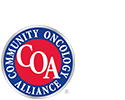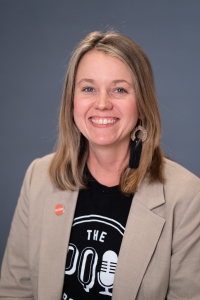Oral Oncolytics Offer Advantages & Pose Challenges for Cancer Patients
Oral oncolytics – targeted cancer medications self-administered in pill form at home instead of intravenously in a cancer clinic or the hospital – have freed patients from the burdens associated with commutes to and from, and hours spent in infusion centers. However, while these oral medications are equally as efficacious as their IV chemotherapy counterparts, they come with a significantly higher cost-sharing burden for patients. For some patients, a monthly prescription can cost thousands of dollars, resulting in financial toxicity, treatment non-adherence and unnecessary treatment delays.
“Innovation in oral therapies, such as ibrutinib and venetoclax for patients with chronic lymphocytic leukemia (CLL), significantly changed the paradigm for patients and have become a standard of care in both the frontline setting and for refractory disease,” said Kirollos S. Hanna, PharmD, BCPS, BCOP, FACCC, director of pharmacy at Minnesota Oncology, Assistant Professor of Pharmacy at Mayo Clinic College of Medicine, member of the NCODA Executive Council, and committee chair and clinical advisor to the Association of Community Cancer Centers (ACCC). “In addition to their clinical efficacy, these oral agents remove the risk of infusion reactions, hematologic side effects and tumor lysis, which are associated with monoclonal antibody infusions.”
Complying with Medication Protocols at Home
With traditional IV chemotherapy, patients typically visit an infusion center for regularly scheduled appointments at which health care professionals deliver the therapy within tightly controlled parameters. Oral therapies taken at home place the onus for proper storage, dosing, and timing on the patient.
“Dosing instructions for most CLL oral oncolytics are relatively easy to adhere to, and drug manufacturers help with color-coded blister packs,” said Hanna. “However, cancer clinics must be diligent about educating their patients to comply with protocols.”
ACCC and NCODA echo Dr. Hanna’s advice about patient education, noting that “effective integration of these agents depends on the close collaboration of cancer care team members and patients/caregivers. Shared decision-making is essential during all phases of care, but particularly so when the treatment option relies so heavily on compliance. Medication adherence is directly linked to the patient’s comprehension of their disease and treatment.”
“We treat many patients with CLL, who tend to be a bit older and may have trouble remembering when to take their medication,” added Dr. Hanna. “They may benefit from a calendar reminder, phone alarm or scheduling the pills around a daily activity like brushing their teeth or walking the dog.”
Medically Integrated Pharmacies Enhance Continuity of Care
In addition to challenges relating to patient education and medication adherence, oral oncolytics can be difficult for patients to access cost-effectively and safely. Enter the medically integrated pharmacy (MIP). MIPs give patients the option to obtain oral oncolytic prescriptions directly from their cancer clinic instead of from a third-party pharmacy (typically mail order) removed from the core patient care team.
NCODA, a grassroots not-for-profit organization dedicated to helping medically integrated oncology teams deliver top-tier care, defines MIP as “a dispensing pharmacy within an oncology center of excellence that promotes a patient-centered, multidisciplinary team approach. The MIP is an outcome-based collaborative and comprehensive model that involves oncology health care professionals and other stakeholders who focus on the continuity of coordinated quality care and therapies for cancer patients.”1
According to Michael Reff, RPh, MBA, founder & executive director of NCODA, the concept of dispensing oral oncolytics in the cancer clinic emerged in the last decade, right around the time that oral medications came onto the market. It was further enabled by the use of electronic medical records (EMRs), which allow MIPs to truly integrate the pharmacy function into the care team to enhance the continuity of care and ensure that the patient has the best experience possible.
“This model of care is right inside the clinic,” Reff said. “The onsite pharmacy team has access to the patient’s EMR, knows in real time what their labs show, when their next appointment is, and whether there have been any changes to medications or dosing. If the MIP has a question or concern, they have direct access to the patient’s doctor and care team down the hall. That kind of visibility and access doesn’t exist when oral oncolytic prescriptions are filled by off-site, third-party mail-order pharmacies.”
With some insurance contracts forcing patients to fill prescriptions outside of the MIP, NCODA is on a mission to overturn these unnecessary hurdles for patients. Through innovation and the development of concise and relevant resources for all members of the oncology care teams, NCODA is showing clear evidence that the MIP model is the answer to solving these challenges.
NCODA stresses the importance of patient education in promoting adherence to medication protocols. Every time a new oral oncolytic medication or IV therapy enters the market, a committee of NCODA members and other collaborators creates an Oral Cancer Treatment Education (OCE) sheet with information on the drug, dosing instructions, potential side effects, and information to help patients manage the side effects. Written on a 6th-grade level, the OCE sheets are designed to start patients out on the right foot for their treatment.
For clinicians, NCODA creates Positive Quality Intervention (PQI) documents, which are precise and concise peer-reviewed clinical guidance resources for specific aspects of cancer care. This tool is used as an internal medically integrated team training resource and supports practices pursuing pharmacy accreditation.
“PQIs provide cancer care teams with information they need to counsel their patients about the oncolytics they prescribe, including summaries of the studies that helped bring the medication to market, the lab tests recommended to establish proper dosing, how to modify dosing throughout treatment, drug-drug interactions to be aware of, and related toxicities,” said Ginger Blackmon, PharmD, assistant director of Clinical Initiatives at NCODA. “Our members take the time to understand the nuances and attributes of each drug, which helps the other members of the care team focus on providing quality care to the patient.”
MIPs Do More Than Fill Scripts: Addressing Financial Toxicity
Reff noted that MIPs also help cancer clinics manage one of the thorniest issues relating to oral oncolytics: the therapies are billed through a patient’s prescription benefits while IV therapies are billed through medical benefits. Not only does that delineation require new business process flows for the clinic, it also can increase the amount of money the patient must pay in out-of-pocket costs.
“Our members are specially trained and have the tools required to work as a bridge between the clinic and the insurance companies,” Blackmon added. “We manage prior authorizations and screen patients for financial stress. Plus, we connect them with financial assistance programs to help them afford their oral medications, so they stay on their prescribed therapy.”
Financial assistance programs include those available from oncolytic manufacturers as well as through independent non-profits such as the HealthWell Foundation, which helps patients fill their insurance gaps by assisting with copays, premiums, deductibles, and out-of-pocket expenses. As of this writing, HealthWell offers several funds in oncology for eligible patients.
1Medically integrated pharmacy. NCODA. Available from: www.ncoda.org. Accessed: August 18, 2023.




















